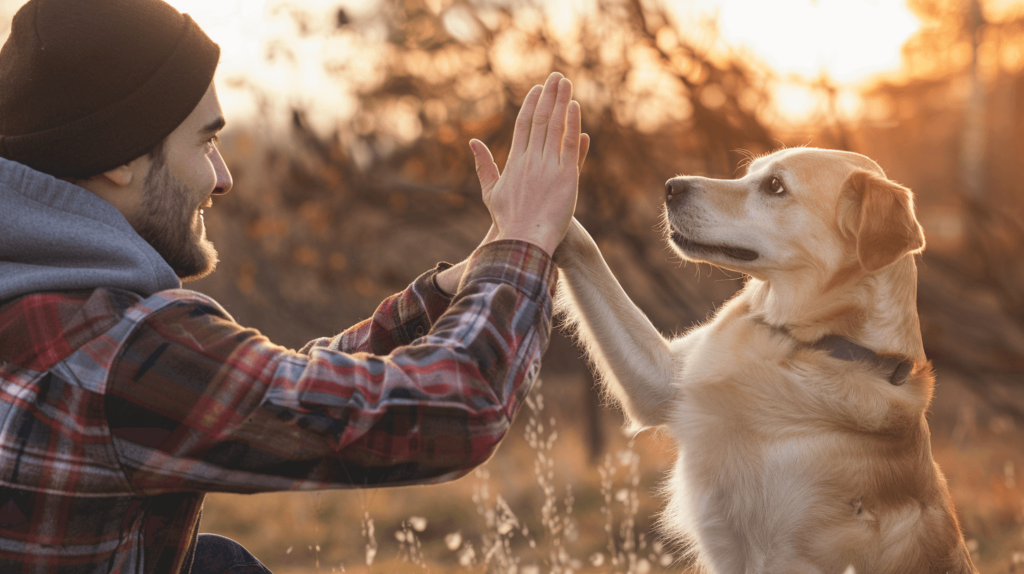Three Easy Dog Tricks to Teach Your Dog
Training your dog to perform tricks is a rewarding endeavor that enhances the bond between you and your pet while providing essential mental stimulation for your furry friend. This comprehensive guide delves into the preparation and execution of effective dog training sessions, emphasizing the importance of positive reinforcement, a quiet environment, and short, engaging practice periods. From basic commands like “paw” to more advanced tricks like “high five” and “jump through a hoop,” each section offers step-by-step instructions and practical tips to ensure your dog learns with enthusiasm and joy. Discover how to transform training into a fun and enriching experience for both you and your dog.
Introduction to Dog Training
Training your dog to perform tricks is not only a fun and engaging activity but also a fantastic way to strengthen the bond between you and your furry friend. Dogs thrive on mental stimulation and the opportunity to learn new things, which can significantly enhance their overall well-being and behavior. Whether you are teaching simple tricks like “sit” and “paw” or more complex actions like “high five” and “jump through a hoop,” the process can be both rewarding and enjoyable for both you and your dog.
Dog training involves more than just teaching commands; it is about communication, patience, and understanding. By using positive reinforcement techniques, you create a learning environment that is supportive and encouraging. This approach not only helps your dog learn more effectively but also ensures that they remain happy and motivated throughout the training process.
Before you start teaching your dog tricks, it is essential to prepare properly. This includes gathering the right tools, selecting an appropriate training environment, and understanding the importance of keeping training sessions short and engaging. With the right preparation and mindset, you can make each training session a positive experience for your dog. In this guide, we will cover essential aspects of dog training, including preparation tips, step-by-step instructions for teaching three specific tricks: Shake a paw, the high five and going through a hoop. By following these guidelines, you can help your dog master new tricks and enjoy the process of learning together.
Training Basics
Reward Treats To motivate your dog, use small, tasty treats that they find irresistible. These can be commercially available dog treats or small pieces of cooked meat. The key is to make sure the treat is something special that they don’t get at other times, ensuring it remains a powerful motivator.
Quiet Environment Choose a quiet place free from distractions for your training sessions. This helps your dog focus on you and the task at hand. An ideal spot could be a quiet room inside your home or a secluded area in your yard.
Praise and Rewards Positive reinforcement is crucial when training your dog. Every time your dog successfully performs a trick, immediately praise them and offer a treat. This reinforces the behavior and makes them more likely to repeat it. Be enthusiastic with your praise to let them know they did something right.
Avoid Overexcitement While it’s important to praise your dog, be mindful not to overexcite them. Excessive excitement can cause them to lose focus and make it harder for them to concentrate on the next task. Maintain a balance of enthusiasm and calmness to keep them engaged.
Short Sessions Keep training sessions short, ideally between 10-15 minutes. This prevents your dog from becoming bored or frustrated. Dogs have relatively short attention spans, and keeping sessions brief ensures they remain engaged and excited about learning.
Trick 1: Teaching the Paw Trick
Step 1: Get Your Dog to Sit Start by commanding your dog to sit. Ensure they are calm and focused before moving on to the next step. Sitting is a basic command that helps them stay in a controlled position.
Step 2: Introduce the Command As your dog sits, say the word “paw” and gently take their paw in your hand. Immediately reward them with a treat. This helps them associate the word with the action.
Step 3: Repeat and Delay Repeat the process several times. Gradually increase the time between saying the command and taking their paw. This teaches them to lift their paw on their own in response to the command.
Step 4: Observe and Adjust Watch your dog’s response. If they start lifting their paw when you say “paw,” continue reinforcing this behavior. If not, go back to simultaneously saying the command and taking their paw.
Step 5: Practice With consistent practice over 2-3 sessions, most dogs will learn this trick. Keep sessions short and positive, ending on a high note to keep your dog motivated.

Trick 2: Teaching the “High Five” Trick
Step 1: Progress from “Paw” Once your dog has mastered the “paw” trick, you can move on to the “high five.” The “high five” is an extension of the “paw” trick and builds on what they have already learned.
Step 2: Raise Your Hand Hold a treat in your fingers and raise your hand slightly higher than you would for the “paw” trick. This encourages your dog to reach higher with their paw.
Step 3: Introduce the Command As your dog reaches for the treat with their paw, say “high five” and reward them. This helps them associate the new command with the action.
Step 4: Practice and Mastery Practice this new trick consistently. Over time, your dog will start to respond to the “high five” command. Eventually, you can use a hand signal alone, and your dog will understand what to do.

Trick 3: Teaching Your Dog to Jump Through a Hoop
Step 1: Safety First Begin by holding the hoop at a low height to ensure your dog’s safety. Start with the hoop 6 inches from the ground for medium-sized dogs like Labradors. For smaller dogs, you can start with the hoop touching the ground.
Step 2: Initial Setup Sit your dog on one side of the hoop and hold their attention with a treat on the other side. Make sure they are focused on you and the treat.
Step 3: Command and Action Release your dog from the sit command, encouraging them to go through the hoop. If they try to go around or under the hoop, calmly guide them back and start again. Consistency is key.
Step 4: Positive Reinforcement When your dog successfully goes through the hoop, say “hoopla” and immediately reward them with a treat. Positive reinforcement helps them understand that going through the hoop is the desired action.
Step 5: Gradual Progression Gradually raise the hoop’s height as your dog becomes more comfortable with the trick. Ensure each increment is small and manageable to prevent injury and build confidence.

Conclusion
Training your dog requires patience, consistency, and positive reinforcement. By following these steps and keeping sessions enjoyable, you can teach your dog a variety of fun and impressive tricks. Remember to always keep safety in mind and adapt your training to your dog’s individual needs and abilities. With dedication and love, your dog will not only learn new tricks but also strengthen the bond you share.









